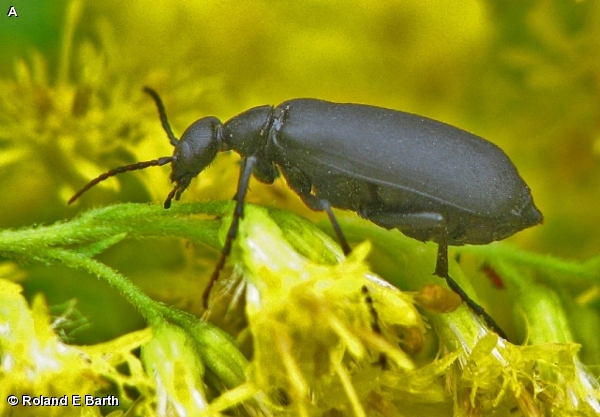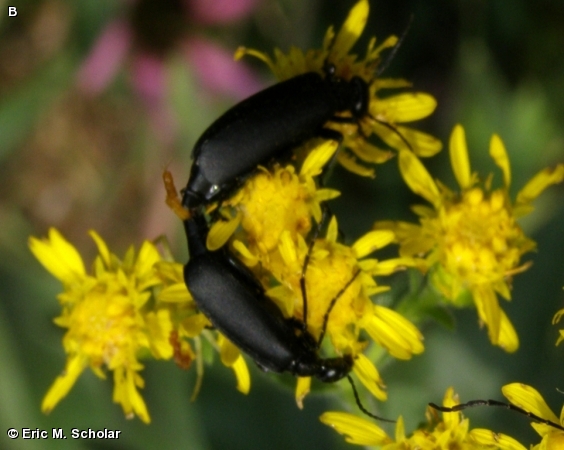
This beetle is black with a long cylindrical narrow body about ¾-1 inch long. The elytra are usually soft and pliable. The antennae are thread like or bead like and relatively short. Although some species of black blister beetles are hard to determine to species this one was identified as E.pennsylvanica by experts at BugGuide.
These beetles are mid to late summer insects, active in mid-July into September. They are common at both Nature centers at this time feeding on goldenrod and other flowers. The beetles shown here were on goldenrod.
Blister Beetles get their name by their resulting defense mechanism. When threatened, the blister beetle is known to play dead and excrete a toxic chemical from their joints called Cantharidin which in essence is an irritant that causes human skin to blister. Blister Beetle larvae will jump onto passing bees, get transported to the bee hive and feed on eggs and larvae once there. After it pupates, the beetle then makes its way out of the nest. Female blister beetles lay clusters of eggs in the soil in late summer. The small, active larvae that hatch from these eggs crawl over the soil surface entering cracks in search for grasshopper egg pods. On finding a grasshopper egg mass, the larvae become immobile and spend the rest of their larval time as legless grubs. The next summer they pupate soon emerging as adults.
Disclaimer: The content of NatureSearch is provided by dedicated volunteer Naturalists of Fontenelle Forest who strive to provide the most accurate information available. Contributors of the images retain their copyrights. The point of contact for this page is: Eric Scholar.


